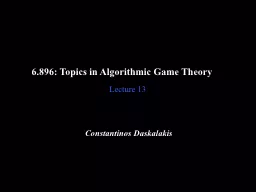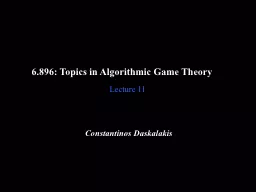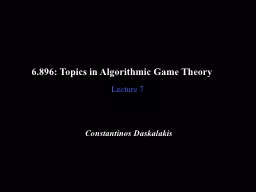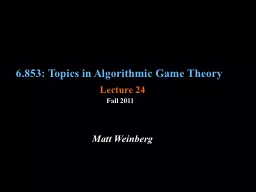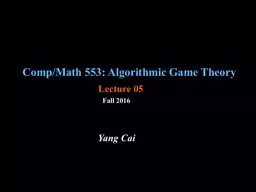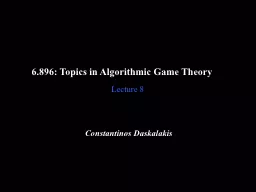PPT-6.896: Topics in Algorithmic Game Theory
Author : conchita-marotz | Published Date : 2018-02-20
Lecture 13 Constantinos Daskalakis multiplayer zerosum games Multiplayer ZeroSum wha Take an arbitrary twoplayer game between Alice and Bob Add a third player
Presentation Embed Code
Download Presentation
Download Presentation The PPT/PDF document "6.896: Topics in Algorithmic Game Theory" is the property of its rightful owner. Permission is granted to download and print the materials on this website for personal, non-commercial use only, and to display it on your personal computer provided you do not modify the materials and that you retain all copyright notices contained in the materials. By downloading content from our website, you accept the terms of this agreement.
6.896: Topics in Algorithmic Game Theory: Transcript
Download Rules Of Document
"6.896: Topics in Algorithmic Game Theory"The content belongs to its owner. You may download and print it for personal use, without modification, and keep all copyright notices. By downloading, you agree to these terms.
Related Documents

